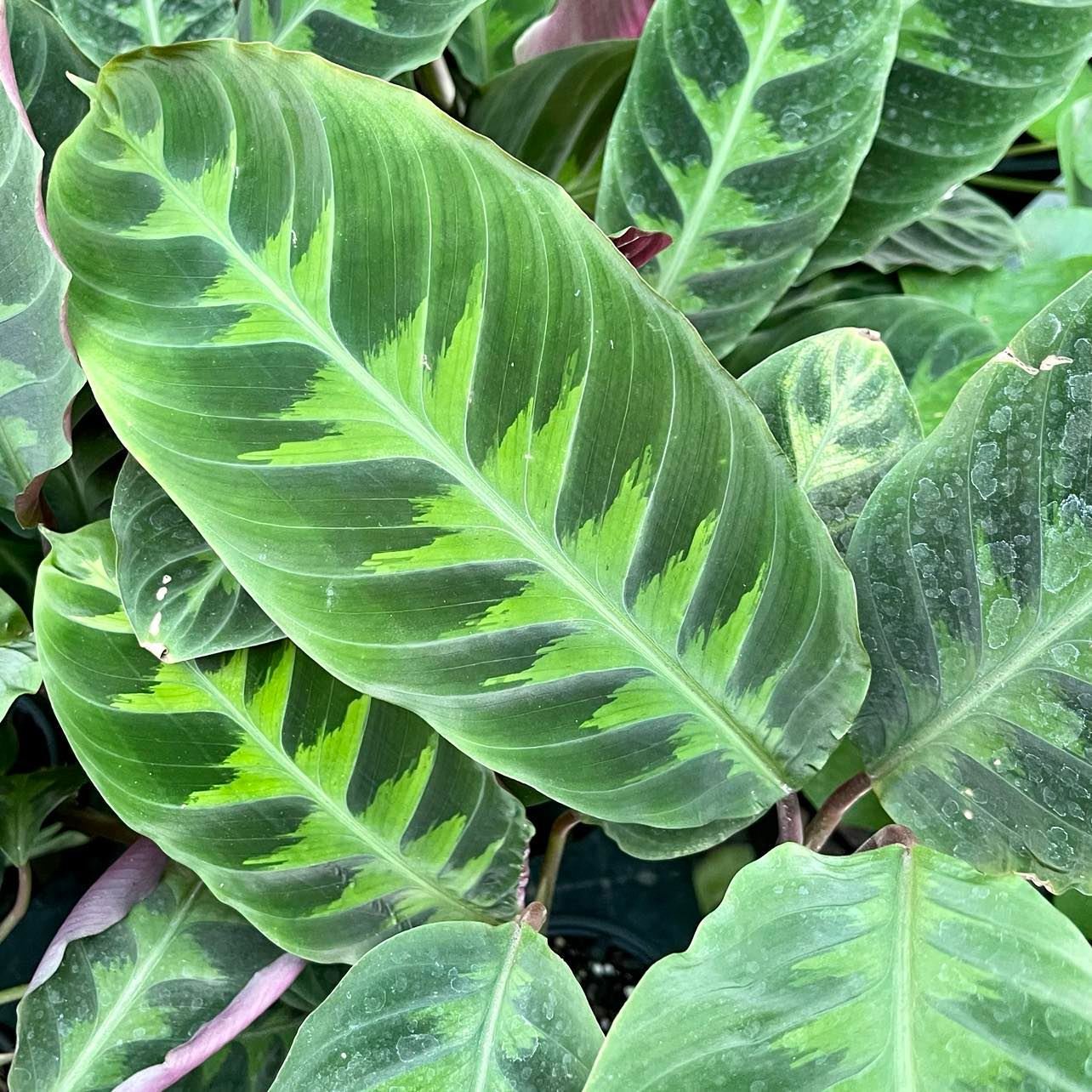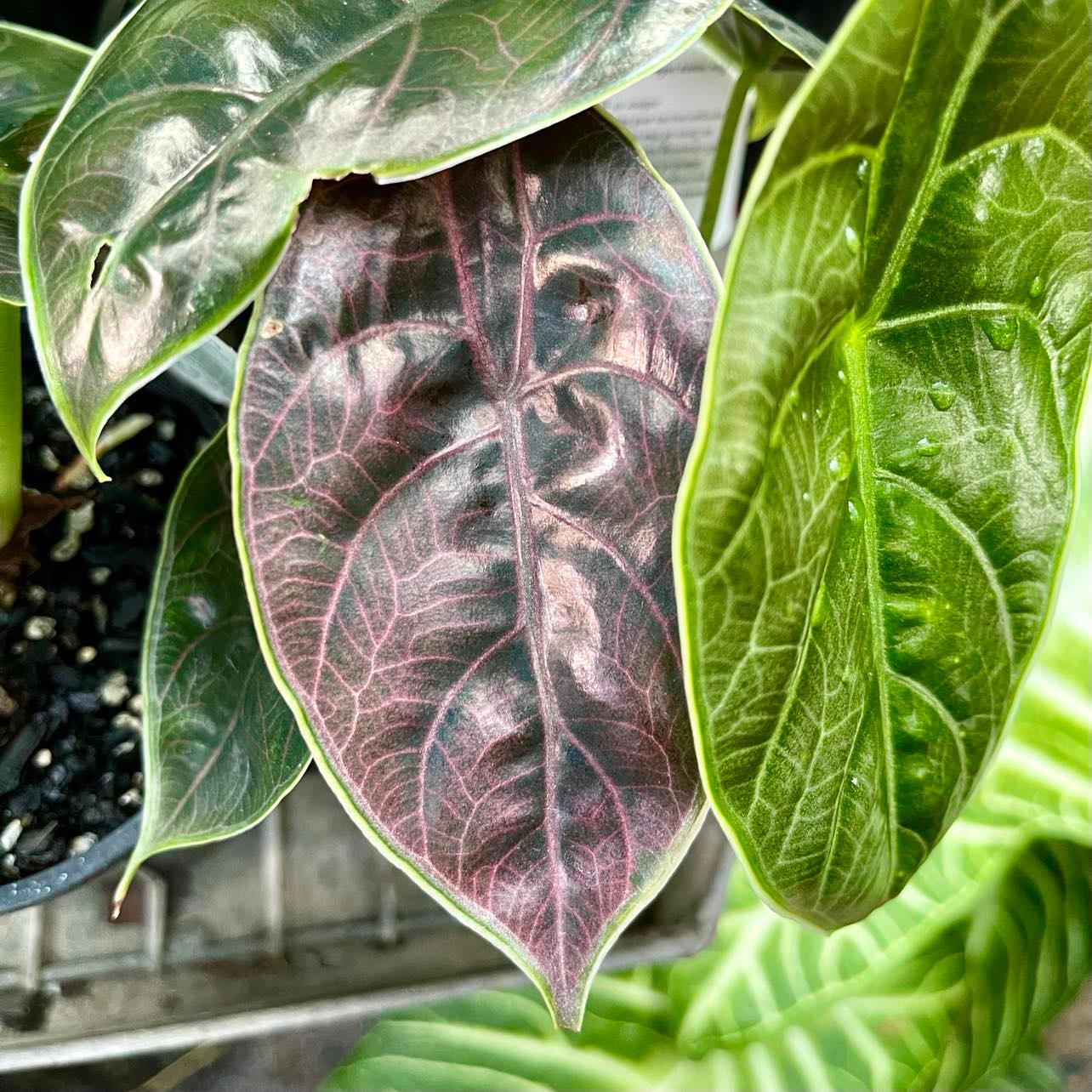Calathea Warscewiczii, also known as the Velvet Calathea, is a beautiful tropical plant with velvety, lance-shaped leaves adorned with intricate patterns. This guide will provide an overview of caring for the Calathea Warscewiczii and help you understand how to keep it healthy and vibrant.

Calathea Warscewiczii Quick Overview
| Feature | Information |
|---|---|
| Scientific Name | Calathea warscewiczii |
| Common Name | Velvet Calathea |
| Light Requirements | Medium indirect light |
| Temperature Range | 65-75˚F (18-24˚C) |
| Humidity Requirements | High (above 50%) |
| Watering Frequency | When top 1-2″ of soil is dry |
| Soil Requirements | Well-draining, peaty mix |
| Fertilizing Frequency | Monthly in growing season |
| Toxicity | Non-toxic |
Identification
The Calathea Warscewiczii is characterized by its velvety, lance-shaped leaves with striking dark green patterns on the upper side and deep purple undersides. The plant also produces stunning cone-shaped inflorescences, making it stand out among other Calathea varieties.
Size
Calathea Warscewiczii can grow up to 60-90 centimeters in height when cared for properly. The plant’s leaves can reach up to 45 centimeters in length, creating an impressive display of lush foliage.
As an evergreen perennial, it maintains its vibrant appearance year-round, making it an ideal choice for indoor plant enthusiasts seeking a constant touch of greenery in their homes.
Light Requirements
Calathea Warscewiczii thrives in medium to bright indirect light. Too much direct sunlight may cause the leaves to fade, scorch, or develop brown edges. Ideal locations for this plant include spots near north or east-facing windows, or in rooms with filtered light.
Temperature Requirements
Maintain a temperature between 65-75°F (18-24°C) for optimal Calathea Warscewiczii health. Avoid placing the plant near drafts, air conditioning vents, or heaters, as sudden temperature fluctuations can cause stress and damage to the plant.
Humidity Requirements
High humidity (at least 60%) is crucial for keeping your Calathea Warscewiczii healthy. If the humidity level is consistently outside this range, you may notice brown leaf edges or curling.
To increase humidity, use a humidifier, place a tray of water with pebbles near the plant, or group it with other humidity-loving plants. To decrease humidity, improve air circulation around the plant.
Watering Requirements
Water your Calathea Warscewiczii when the top inch of soil feels dry, ensuring that the soil remains consistently moist but not soggy. Reduce watering frequency during the winter months, as the plant’s growth slows down.
Overwatering can lead to root rot, while underwatering may cause the leaves to wilt or develop crispy edges.
Fertilizing Requirements
Fertilize your Calathea Warscewiczii with a balanced liquid fertilizer diluted to half strength every 4-6 weeks during the growing season (spring and summer). Over-fertilizing can cause leaf tip burn, while under-fertilizing may lead to poor growth and pale leaves. A 2:1:2 ratio of nitrogen, phosphorus, and potassium is a suitable option for this plant.
Soil Requirements
Calathea Warscewiczii requires well-draining soil that retains moisture without becoming waterlogged. A mix of equal parts peat moss, perlite, and potting soil is an excellent choice for promoting healthy root growth.
Diseases & Pests
Common diseases and pests that can affect Calathea Warscewiczii include:
- Spider mites: Tiny pests that feed on plant sap, causing stippling on leaves; treat with insecticidal soap or neem oil.
- Mealybugs: Small, cotton-like insects that can cause leaf curling or yellowing; remove with a cotton swab dipped in rubbing alcohol or treat with insecticidal soap.
- Aphids: Tiny insects that can cause distorted or yellow leaves; treat with insecticidal soap or neem oil.
- Root rot: Caused by overwatering and poor drainage; ensure proper watering practices and well-draining soil.
Toxicity
Calathea Warscewiczii is considered non-toxic to humans and pets. However, it is always advisable to keep plants out of reach of curious pets or children to prevent accidental ingestion or damage to the foliage.
Common Problems
- Yellow leaves: Overwatering, underwatering, or exposure to cold drafts may cause yellowing leaves. Adjust your watering schedule and ensure proper temperature conditions.
- Brown leaf tips or edges: Low humidity or over-fertilization can cause brown leaf tips. Increase humidity and ensure proper fertilization practices.
- Curling leaves: Underwatering or low humidity can lead to curling leaves. Adjust your watering schedule and ensure a high humidity environment.
Conclusion
Calathea Warscewiczii is a stunning addition to any indoor garden, thanks to its lush, velvety leaves and intricate patterns. By following the care tips provided in this guide, you can enjoy a thriving Calathea Warscewiczii that adds a touch of tropical elegance to your home.
If you’re interested in exploring other Calathea varieties, consider Calathea Orbifolia, Calathea Medallion, or Calathea Rattlesnake for their unique foliage patterns and similar care requirements.



